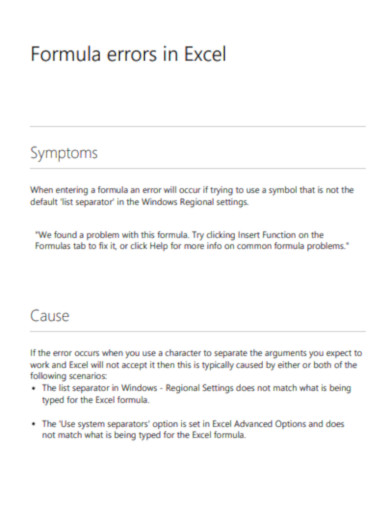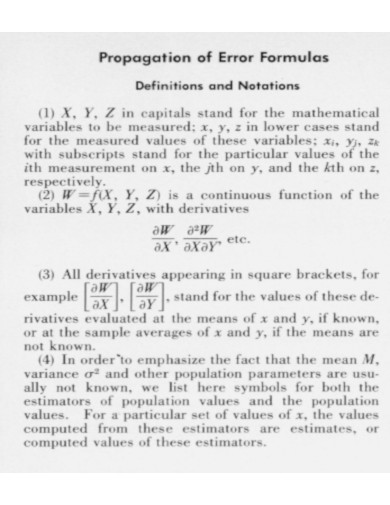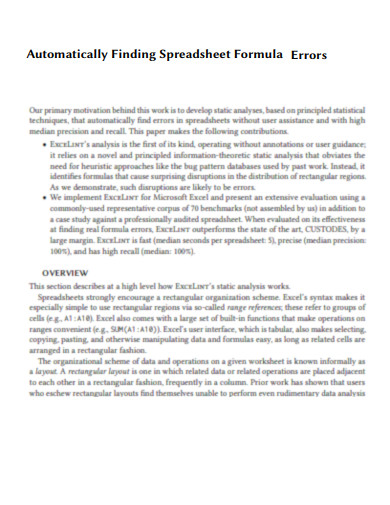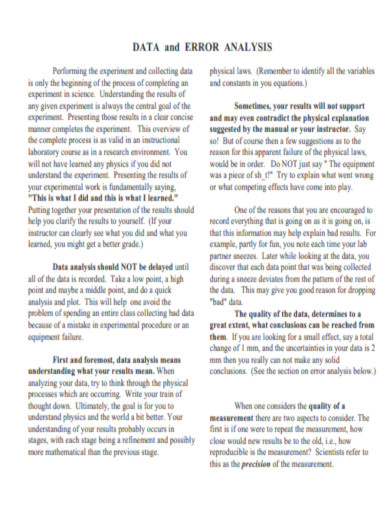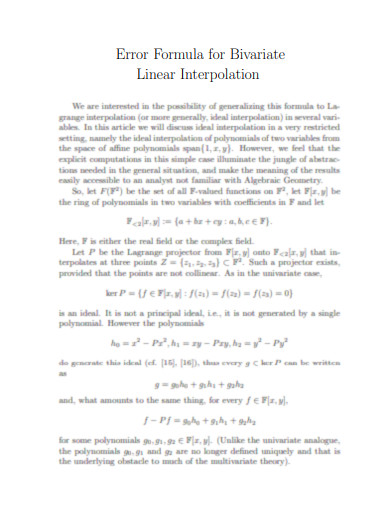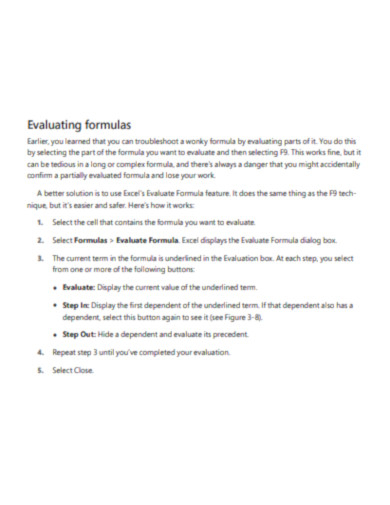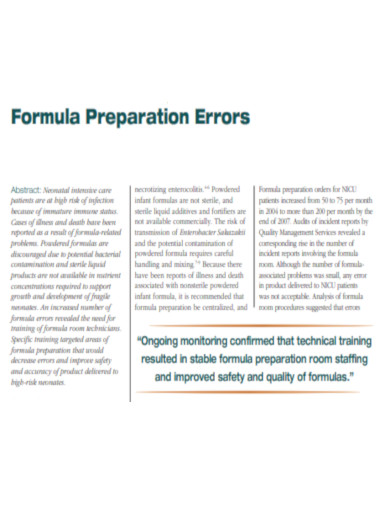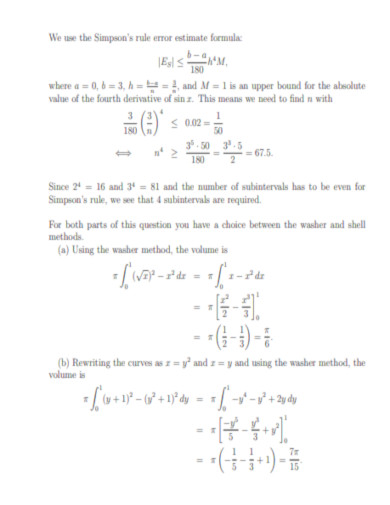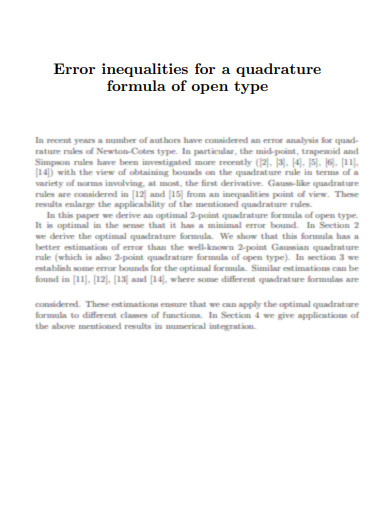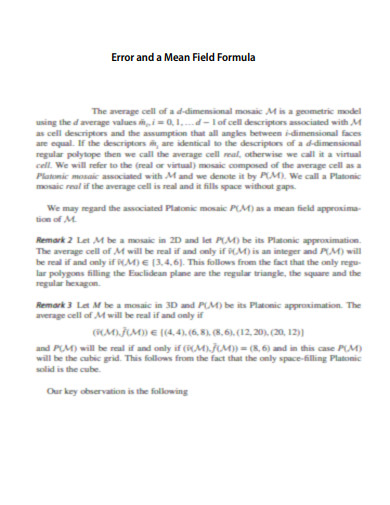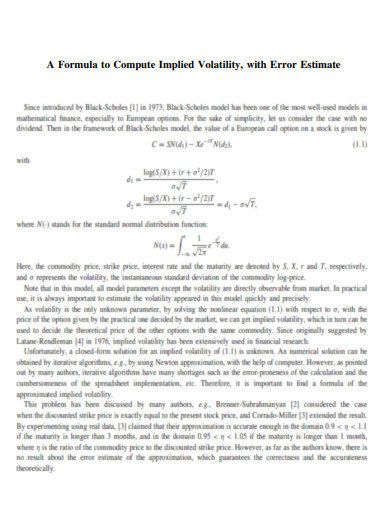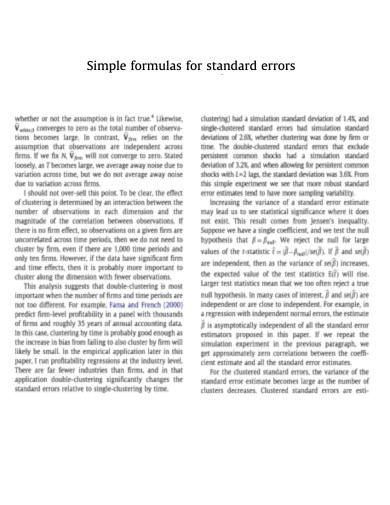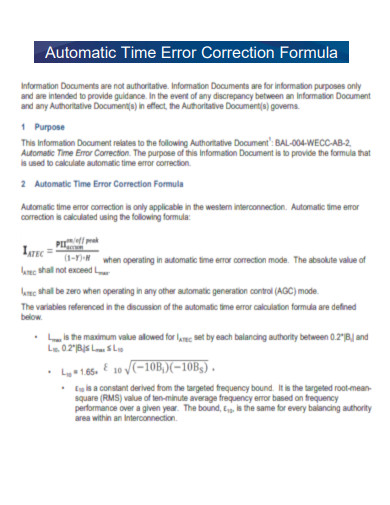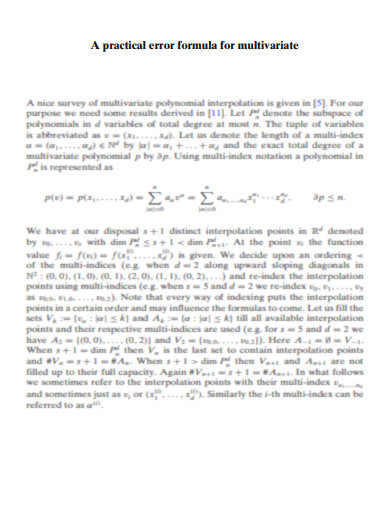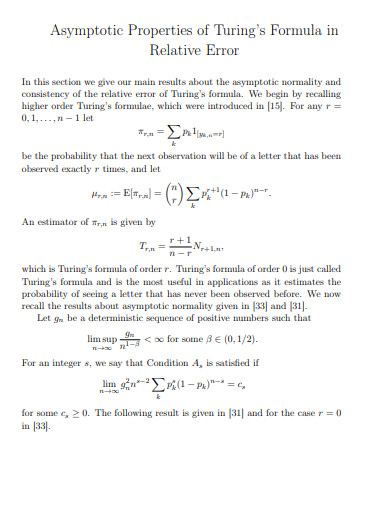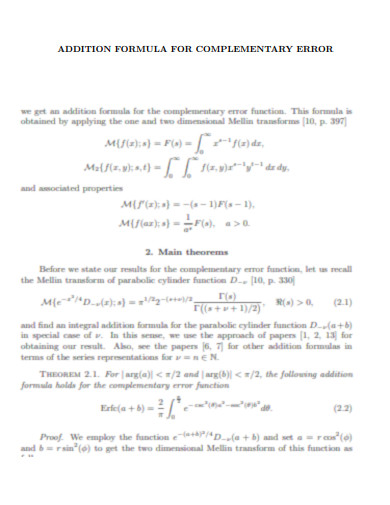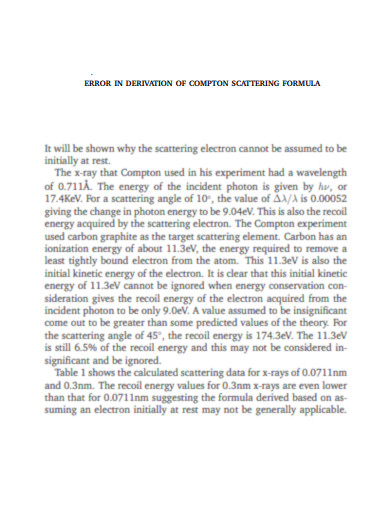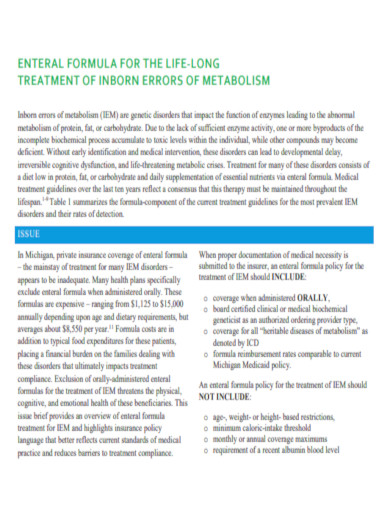FREE Error Formula s to Download
A sample error formula is a formula that you should use to calculate the sampling error. The sampling error is the statistical error that you can get when you test your samples. What is a sampling error in research? What is a sampling error in statistics? It happens when the population is not properly reflected under consideration. There can be many examples of improper sampling in everyday life. This means that we cannot avoid sampling errors sometimes. Whether it is a sampling error or a non-sampling error, it can surely affect our research. The sample error formula can be simply defined as the following:
Sampling error = confidence level x [standard deviation of population / (square root of sample size)]
Some examples of a sample error formula are the sample standard error formula, sample size error formula, sample mean error formula, and sample statistic standard error formula. The estimated sample error formula can help any researcher to know the risks of their research by knowing the errors that they can encounter. By using the margin of the sample error formula, they will know how to reduce any errors. To make their work easier, they can use a sampling error calculator. This is a tool that is easy to use like a sample size calculator or sample variance calculator.
Types of Sampling Error
There are common errors that you can find in research. These are the sampling error types. The causes of sampling differ with each type. For you to make your work better, you should know the types of sampling errors. They are the following:
Population-specific error: When a researcher does not understand who to survey, you can have a population-specific error in your study. This error can be avoided if you have a better understanding of your research questions. You should do this before doing the survey. There is a need for a better selection of samples. Whether it is brief research or not, you must understand the population that you are going to have. So, when you are doing research, you must be sure first of the respondents that you are going to choose. For example, if you are having a study about kid’s apparel, ask yourself first about the best respondents that you are going to have for the survey. If you cannot get the right respondents, you can have an error in your research.Selection Error: This type of error can happen if respondents just volunteered to participate in the study. Sometimes, if respondents will just self-select, you will not have the chance to choose the right respondents for your survey. Remember, any survey report should have the right demographics for it to be accurate. If participation will be done by self-selection, you can expect that there can be some errors in your research. This is because some of the answers can be biased. You cannot expect honest answers sometimes if respondents can have their motives for joining the study. It is also true that they may not be right for the research. Because of this, you can find a margin of error in your study. Your survey can lack the coherence that it needs. So, before you agree with volunteers to join your research, you must check first if they will be fit for the study.Sample Frame Error: When you have chosen a sampling frame for your research and some of the respondents did not respond to it, there can be a sample frame error. Oftentimes, we can successfully contact the respondents for our study. Yes, we may choose the perfect population for our study, but making them all respond to your survey cannot be possible sometimes. Not all may have the time to respond to your survey. Some may just change their mind and pass on answering your surveys. There can be many unexpected reasons. When this happens, you can expect a sampling frame error. You can find inconsistencies in your research when the sampling frame fails to participate in your research.Non-response error: Non-response error is a sampling error that happens when respondents fail to reply to some answers to your questions. This can cause inconsistencies in the result of your survey. It can be hard to get the right analysis if there is some missing information. An expectation for a complete survey is needed to ensure that you have the right samples. When something is not answered, you may have made the wrong recommendations because the details are not enough. Non-response error also applies to respondents who do not agree to participate in the research.Measurement Error: Many things can happen at the time of data collection. There can be different sampling methods that can affect the data that you can gather. Whether you are using convenience sampling, stratified sampling, purposive sampling, or systematic sampling, some information that you can collect may not be based on facts. When this happens, there will be an error in your study. You will not have the right measurements for your data. This will bring you inaccurate information. It can greatly affect the feasibility of your research. So, to avoid this sampling error, be sure that all the data that you can gather will be according to facts. This is the only way to avoid sampling bias.Data Processing Error: When you are categorizing data, some errors can be made. You can have mistakes in drawing up tables or code responses. Some mistakes can be made while doing data processing. To troubleshoot these mistakes, you need the sample error formula to check for your mistakes. Through it, you can know the mistakes that you have committed in data processing. Since we cannot avoid having mistakes in data processing sometimes, the only resort is to check for any inconsistencies. After knowing the sampling error, we will know what to do to correct the errors in our research.Data Analysis Error: Aside from errors that can be derived from data processing, there can also be errors made when you are doing data analysis. Data analysis is not a simple job. As this is a difficult process, researchers may commit some errors while having their observations. There can be mistakes in interpreting data and counting the value of the gathered information. Researchers are just human. They can make mistakes sometimes. By using a sample error formula, you can trace your mistake in data analysis. This is something that you should do because there should be accuracy in your study.
Tips to Reduce the Sampling Error
We want our study to be as accurate as possible. That is why we are using a sample error formula to detect the errors that we have in our research. But we should not only detect our errors, we should do something so that they will not occur. There are some ways to reduce sampling errors. Have the following tips:
Know Your Population: Before doing your survey, it will be advisable to be familiar with the demographics that you are using first. Know the population that you have selected. Without the proper information on the population, you will not know if you are doing the right research. Be sure that the population fits your needs. Only through that can you know that you have the right target population. In this, you can get assurance that you are doing the right research.Increase the Sample Size: For you to get more accurate information, you must increase the sample size. If the sample size is too small, it may not give you the accuracy of data that you need. This is because the sample size is too small and it may not bring facts. For better observation, larger samples are needed. In this, you may know that the information is enough.Do an External Record Check: To confirm the recorded data, do an external record check. This is good to know the accuracy of data. By doing checks, you will know if the data is reliable. You will know if the information is consistent. There can be written results that will prove the feasibility of your data.Make the Survey Confidential: The best thing that you can do to reduce sampling errors is to make the survey confidential. Through this, you can eliminate sampling bias. When the survey is confidential, you can be sure that the answers of the respondents will be unbiased. No third party will affect their decisions to answer questions in your survey.Train Your Team: There can be no other greater tip than training your team. By doing this, you can make them skillful in doing research, eliminating any mistakes that they can make. You can find fewer mistakes in data analysis and data processing. When they are trained, you can expect fewer sampling errors.
A sample error formula may be difficult to use at first. You may not know what to calculate. Things may even be harder if you do not have a sample error calculator. But we have prepared some steps for you to have ease in calculating the sampling error.
1. Record the Sample Size
The simplest way to find the sampling error formula is to know the sample size. Review your study to find the record of the sample size. If the sample size is 50, then use 50 in the formula.
2. Find the Standard Deviation
By knowing the standard deviation, you will know the probability of your research. To get this, you should find the distance between data points and the mean. The parameters of the population and the average value are needed to get this.
3. Determine Confidence Level
The confidence level is the interval in your sample size. It defines the range of values that have the right population. Divide the confidence interval by two and multiply it by the square root of the sample size. After that, divide it by the sample standard deviation.
4. Calculate the Sampling Error
To get the sampling error, you must find the square root of the sample size. Divide the standard deviation by this. Then multiply it by the confidence level score.
FAQs
Yes, the sample error formula is important. We need to calculate the sampling error to estimate the number of inconsistencies in the sample size.
How do you find a sampling error?
Sampling error is common in studies with representative samples. But this cannot be prevented because you cannot collect data from an entire population.
In any market research, we need to ensure that we can have an accurate study. We can only have this if our samples will be accurate, too. To make sure of this, we should minimize errors. We need the sample error formula to ensure that we can calculate the sampling error. So, know how to calculate using the sample error formula to provide what is needed in your research.
